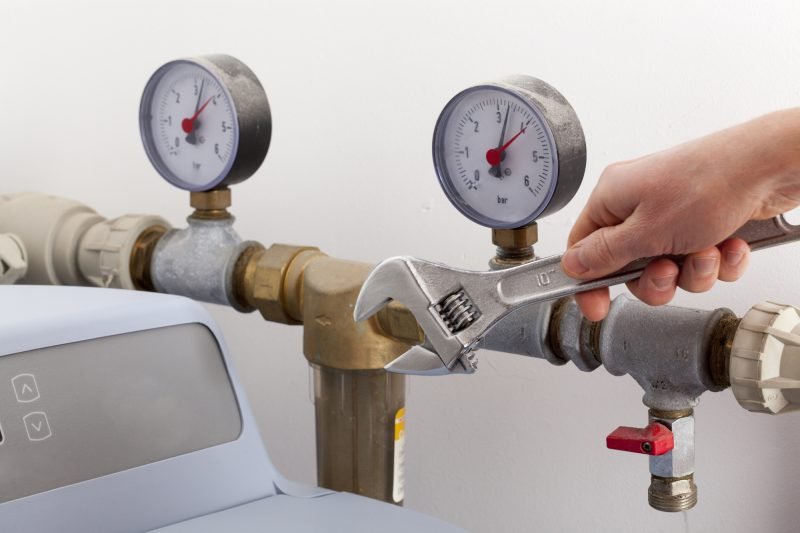Water Pressure Handy Guide

Read our post below to discover the key facts about Water Pressure in the UK Home - all the advice and guidance you'll need from our expert team…
What is water pressure?
Essentially this is the measurement of how fast water flows through your pipes and taps In a home with low water pressure, the water flow is slow and you’ll notice this by the fact it takes a long time to fill a sink or bath with water especially in upstairs bathrooms. Conversely, in homes with high water sinks in the kitchen and bathroom fill up fast and you’ll notice the strong water pressure from the sink, bath or shower. Your water pressure is dictated by your boiler and water tank, therefore knowing the type of boiler can help you identify your pressure.
Which type of boiler do I have?
3 types of boiler systems exist: gravity-fed, combi boiler and unvented - and each can influence water pressure differently..
Gravity-Fed: Common in older properties, this system normally features a cold water tank in the loft and a hot water cylinder elsewhere in the house. This type of system is most likely a low-pressure water system. However, for homes with a decent height between cold water tank and tap/shower may find they have a higher pressure.
Combi Boiler: This applies most often to wall-mounted boilers housed in the kitchen. If there’s no cold or hot water storage tank in the home, this reveals that you have a high-pressure water system. These are fed straight from mains pressure cold water, quickly heated and then pumped around the home.
Unvented: In properties which have a hot water tank but no cold tank present, these systems provide high-pressure water. Water is commonly in a hot water tank (at mains pressure level) then heated by immersion heaters alongside the home's central heating.
How is water pressure measured?
Water pressure is measured in bars against the distance that the water must be pumped around the home. The basic measurement is that one bar of pressure is needed to push water to a height of 10 metres. All taps are rated with a minimum required water pressure rating, this is commonly between 0.1 and 3 bar. Anything lower than one bar is considered low pressure. Your water supplier must deliver a statutory minimum of 1 bar of normal mains water pressure to your home. This is easily measured where pipework enters your house or flat - ie at the property boundary.
How to check your water pressure
The simplest way to check is to call your local water supplier or plumber Plumbers use pressure gauge tools (it's possible for you to purchase and fix to a tap yourself). Otherwise it's possible to calculate an approximate value by measuring the distance /drop between your water tank and the tap in metres.
Using the calculation: One metre = 0.1 bar
How can I test my water pressure?
For at home testing, use a 1 or 2 litre container and a stopwatch or timer. Hold the jug under a tap, and run water for 6 seconds.
Then use the following calculation:
Flow Rate=Amount of water in jug (in litres) x 10
This works out your home’s flow rate in litres per minute. If it's less than 10 litres per minute, this indicates you have low water pressure. A flow rate between 10 and 15 litres per minute is considered average but it's possible to improve. Whereas anything above 15 litres per minute may be regarded as strong.
What is the best water pressure for a tap?
If your home has low water pressure, go for taps that are suitable for both high and low-pressure systems. Ensure you check that the minimum water pressure required is the same or lower as your home’s water pressure. Alternatively for dwellings with high water pressure select taps that are suitable for high and low water pressure systems (as above), or simply for high-pressure systems alone.

